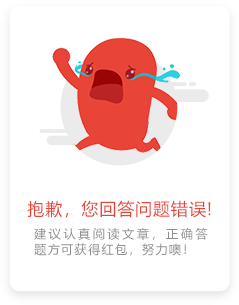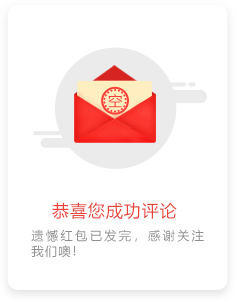效率与颜值兼得,华为MatePad Air 2025款解锁年终高效生产力体验
2025-12-05
| <diego:withObject value="${people}"> <diego:withCollection property="men"> <diego:elementout property="name"/> </diego:withCollection> </diego:withObject> |
| package diegoyun.vo; import java.util.Collection; public class People { private Collection men = null; public Collection getMen() { return men; } public void setMen(Collection men) { this.men = men; } } |
| package diegoyun; import javax.servlet.jsp.JspException; import javax.servlet.jsp.tagext.BodyTagSupport; import org.apache.taglibs.standard.lang.support.ExpressionEvaluatorManager; public class WithObjectTag extends BodyTagSupport { private Object value = null; public Object getValue() { return value; } public void setValue(Object value)throws JspException { this.value = ExpressionEvaluatorManager.evaluate("value", value.toString(), Object.class, this, pageContext); } public int doStartTag() { return EVAL_BODY_INCLUDE; } public int doEndTag()throws JspException { return EVAL_PAGE; } } |
| package diegoyun; import java.util.Collection; import java.util.Iterator; import javax.servlet.jsp.JspException; import javax.servlet.jsp.tagext.BodyTagSupport; import org.apache.commons.beanutils.PropertyUtils; public class WithCollectionTag extends BodyTagSupport { private Object element = null; private Collection list = null; private Iterator iterator = null; public Object getElement() { return element; } public void setProperty(String property) throws JspException { //取得父Tag对象,并且得到Collection WithObjectTag parent = (WithObjectTag) getParent(); if (parent == null) throw new JspException("parent tag is null"); try { Object propertyValue = PropertyUtils.getProperty(parent.getValue(),property); this.list = (Collection) propertyValue; if (list == null) throw new JspException("Collection is null"); } catch (Exception e) { throw new JspException(e); } } public int doStartTag() throws JspException { //设置第一个元素,然后执行子Tag iterator = list.iterator(); if (iterator.hasNext()) element = iterator.next(); return EVAL_BODY_INCLUDE; } public int doAfterBody() { if (iterator.hasNext()) { //如果还存在子元素,设置子元素,并且再次执行子Tag //循环由此而来 //否则不再执行子Tag element = iterator.next(); return EVAL_BODY_AGAIN; } else return EVAL_PAGE; } } |
| package diegoyun; import java.io.IOException; import javax.servlet.jsp.JspException; import javax.servlet.jsp.tagext.TagSupport; import org.apache.commons.beanutils.PropertyUtils; #p#分页标题#e# public class ElementOutputTag extends TagSupport { private Object propertyValue = null; public void setProperty(String property)throws JspException { WithCollectionTag parent = (WithCollectionTag)getParent(); if(parent == null) throw new JspException("parent tag is null"); try { //判断上层tag中是否存在该属性名称,如果存在,取得属性值,否则报错 propertyValue = PropertyUtils.getProperty(parent.getElement(), property); } catch (Exception e) { throw new JspException(e); } } public int doEndTag()throws JspException { try { //简单的把值打印到jsp页面 pageContext.getOut().print(propertyValue); } catch (IOException e) { throw new JspException(e); } return EVAL_PAGE; } } |
| <!--WithObjectTag--> <tag> <name>withObject</name> <tag-class>diegoyun.WithObjectTag</tag-class> <body-content>JSP</body-content> <attribute> <name>value</name> <required>false</required> <rtexprvalue>true</rtexprvalue> </attribute> </tag> <!--WithCollectionTag--> <tag> <name>withCollection</name> <tag-class>diegoyun.WithCollectionTag</tag-class> <body-content>JSP</body-content> <attribute> <name>property</name> <required>false</required> <rtexprvalue>true</rtexprvalue> </attribute> </tag> <!--ElementOutputTag--> <tag> <name>elementout</name> <tag-class>diegoyun.ElementOutputTag</tag-class> <body-content>empty</body-content> <attribute> <name>property</name> <required>false</required> <rtexprvalue>true</rtexprvalue> </attribute> </tag> |
| <%@ page language="java" %> <%@ page import="diegoyun.vo.*"%> <%@ page import="java.util.*"%> <%@ taglib uri="/WEB-INF/tlds/diego.tld" prefix="diego"%> <html> <body bgcolor="#FFFFFF"> <% Collection c = new ArrayList(); Man man1 = new Man(); man1.setName("diego"); c.add(man1); Man man2 = new Man(); man2.setName("Zidane"); c.add(man2); Man man3 = new Man(); man3.setName("Rui"); c.add(man3); People p =new People(); p.setMen(c); request.setAttribute("people",p); %> Test loop tag: <br> <diego:withObject value="${people}"> <diego:withCollection property="men"> <diego:elementout property="name"/> <br> </diego:withCollection> </diego:withObject> </body> </html> |
| Test loop tag: diego Zidane Rui |
评论 {{userinfo.comments}}
{{child.content}}






{{question.question}}
提交
